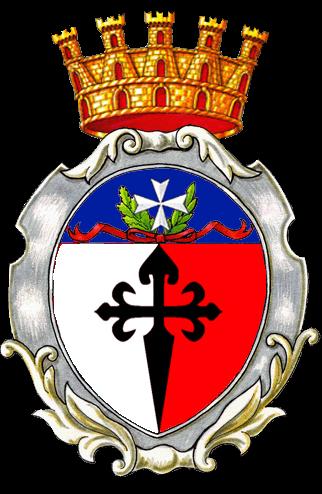
GREEN HOP IPA HOPPY ALE
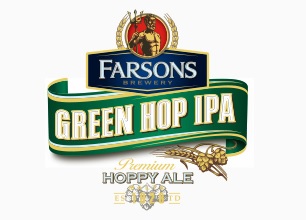
Farsons Green Hop IPA is an amber-coloured pale ale made from malted barley, brewed from a special blend of five hop varieties. The beer is hopped in two stages giving it a distinctive hoppy flavour. The ale was introduced to the Maltese market by Simonds Farsons Cisk in 2021, but its roots go back to the colonial era. IPA was first imported by H&G Simonds when the firm established a local branch in 1890 and brewed in Malta for the first time after Simonds merged with Farsons in 1929.
IPA stands for India Pale Ale as a result of its exportation in bulk by the British to the Far East.
India Pale Ale was first brewed in Malta shortly after the merge between the local branch of H&G Simonds and Farsons Ltd. in 1929
The first British presence in India derives from 1600 through the establishment of a private trading enterprise by a conglomeration of explorers and merchants styled as the East India Company.
The company duly established outposts in the East Indies and East Asia to compete with similar European initiatives by the Portuguese, the Dutch and eventually the French.
By the 1650s the EIC had founded four trading posts in India which included over twenty-three factories. This progression led to a number of wars between Britain and the Netherlands.
In the 1670s, King Charles II granted the EIC a series of rights allowing the company to use military force and methods to defend and expand its territorial acquisitions. This proved to be insufficient as in 1690 the British settlement in Bombay was overrun by elements of the Mughal Empire.1
Despite this major setback, the company subsequently re-established itself in Bombay soon after and set up a new base in Calcutta.
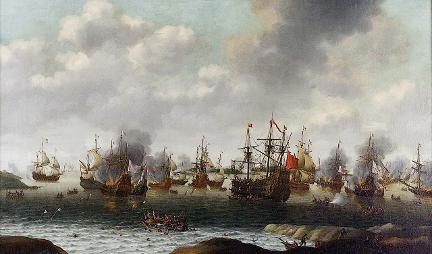
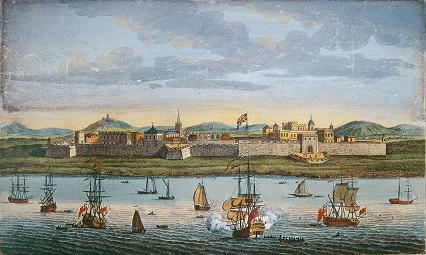
British trade expansion in India led to four wars between England & the Netherlands
Fort St. George: India's first English Stronghold
Fort St. George: India's first English Stronghold
The 18th century was dominated by wars between England and France with both these nations competing for territorial and colonial expansion all over the globe. The French were eventually defeated, and the EIC persisted in India despite tribal conflicts, famines and other issues.
A series of alliances between the company and regional governors enabled the company to expand further and raise its own armies by recruiting local troops, slowly establishing its authority across India. This came to an end in 1857 due to a major rebellion compelling the British monarchy to intervene and take over direct control of British India in 1858.
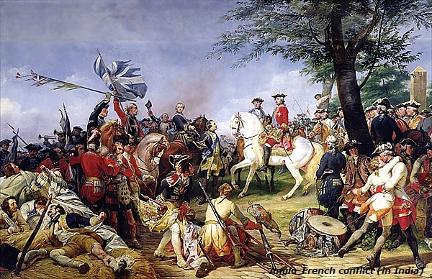
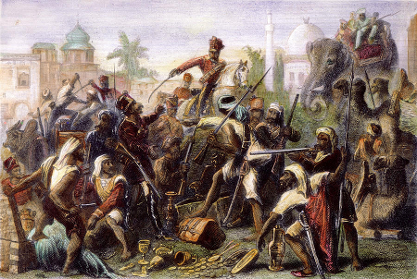
The Carnatic Wars was a series of three military Anglo-French conflicts between 1746-1753
The Sepoy Mutiny of 1857 evolved into a major rebellion necessitating the Crown's military intervention in India
The Sepoy Mutiny of 1857 evolved into a major rebellion necessitating the Crown's military intervention in India
British efforts to export beer to India through the 17th and 18th centuries had proven to be as much of a struggle and mostly unsuccessful. The dark porter ales brewed in England proved to be unfit for the tropics.
Trips to India then taking up to six months resulted in stale, infected beer, compounded by losses due to damages sustained by cargoes during storms and pilferage by scurvy-ridden sailors. Remedies such as shipping unfermented beer or beer concentrate for final elaboration in India were just as unsuccessful.
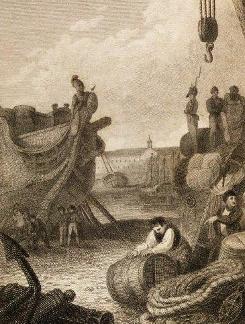
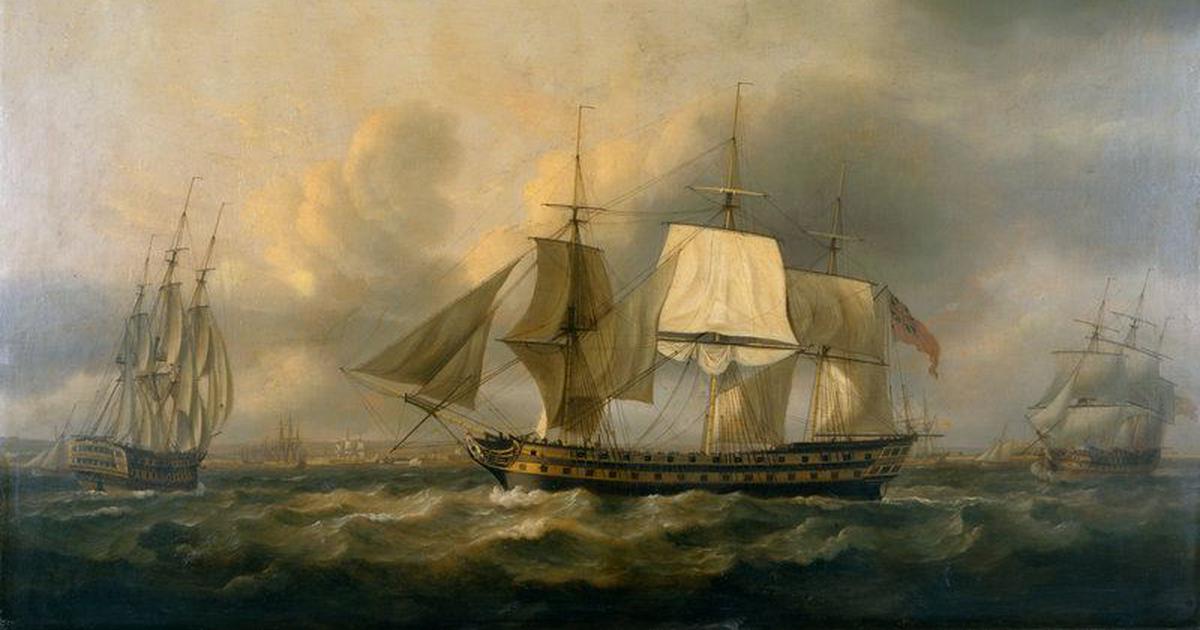
Loading Barrels in 1802 - The Earl of the Abergavenney was an East India Company Ship from 1796 shipwrecked at Weymouth Bay on its 5th voyage in 1805 - She was captained by John Wordsworth, brother to the famous English poet William. John and 262 others lost their loves when she went down. We have several musket & pistol flints and some lead seals recovered from the wreck in our collection
Everything changed when a new variety of pale ale was developed in England during the mid-18th century. This rich brew was not intended for immediate consumption and aged for a number of years for it to mellow down, making it possible to survive the long voyage to India.
In January 1822, the Calcutta Gazette announced the unloading of London-based Hodgson's Bow Brewery prime pickled ale for the first time. When the firm imposed itself as a monopoly and started shipping the ale to India themselves, the East India Company retaliated by commissioning Allsopp Brewery, Bow's main rival, to commence production of this beer variety.
Other breweries followed suit and it soon found its way to British Colonies across the Empire including Malta. The first reference to this brew as India Pale Ale derives from an advertisement published by the Liverpool Mercury Newspaper in January, 1830. Further use of this nomenclature eventually spread to bottle labels and merchandise towards the end of the 19th century / early 20th century.
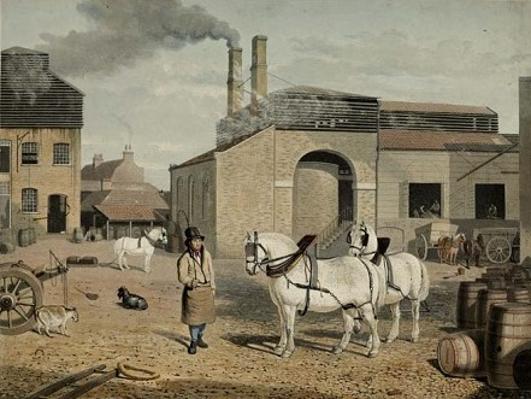
Hodgson's Bow Brewery in London in 1827 - Allsopp's IPA Bottle Label
The rest of this page concerns the bottles, labels, crowns and promotional material employed by Simonds Farsons Cisk since their re-introduction of India Pale Ale to the Maltese market in 2021.
:QUICKLINKS:
LACTO MILK STOUT
SFC BEERS
SIMONDS FARSONS LTD
SIMONDS FARSONS CISK LTD
MALTESE BEERS
OTHER MALTESE BEERS
MALTESE BEVERAGES
MADE IN MALTA
HOME PAGE
Notes & References
1. The (Islamic) Mughal Empire was founded in 1526 and allied to the Ottoman Empire until its dissolution by the British Crown after the Indian Rebellion of 1857
LACTO MILK STOUT
SFC BEERS
SIMONDS FARSONS LTD
SIMONDS FARSONS CISK LTD
MALTESE BEERS
OTHER MALTESE BEERS
MALTESE BEVERAGES
MADE IN MALTA
HOME PAGE
Notes & References
1. The (Islamic) Mughal Empire was founded in 1526 and allied to the Ottoman Empire until its dissolution by the British Crown after the Indian Rebellion of 1857
Resources
Farsons.com
The Mughal Empire - Wikipedia.org
East India Company & Company Rule in India - Ditto
Colonial India & the British Indian Army - Ditto
How the India Pale Ale got its Name - William Bostwik via Smithsonianmag.com
The First Ever Reference to IPA - Martyn Cornell via Zythophile.co.uk
A Drink for the Empire - Isleofdogslife.wordpress.com
India Pale Ale - Wikipedia.org
Farsons.com
The Mughal Empire - Wikipedia.org
East India Company & Company Rule in India - Ditto
Colonial India & the British Indian Army - Ditto
How the India Pale Ale got its Name - William Bostwik via Smithsonianmag.com
The First Ever Reference to IPA - Martyn Cornell via Zythophile.co.uk
A Drink for the Empire - Isleofdogslife.wordpress.com
India Pale Ale - Wikipedia.org
Images
Simonds Farsons IPA Bottle Label - Simonds.me.uk
Dutch Raid on the Medway in June 1667 by Pieter C. van Soest - Royal Greenwich Museums via Wikipedia.org
18th Century Painting of Fort St. George by Jan van Ryne - Jon Wilson via Historytoday.com
Anglo-French Carnatic War in India - Tutorialspoint.com
Sepoy Mutiny of 1857 by Granger - Wikipedia.org
Loading Barrels in an 1802 engraving by F. Hurst - Julia Blakely via Smithsonian Libraries (blog.library.si.edu)
The Earl of Abergavenny off Southsea in 1801 by Thomas Luny - Wikipedia.org
Bow Brewery in 1827 - A Drink for the Empire - Isleofdogslife.wordpress.com
Allsopps IPA Bottle Label - Martyn Cornell via Zythophile.co.uk
Some images may have been cropped, resized or altered for better clarity & presentation